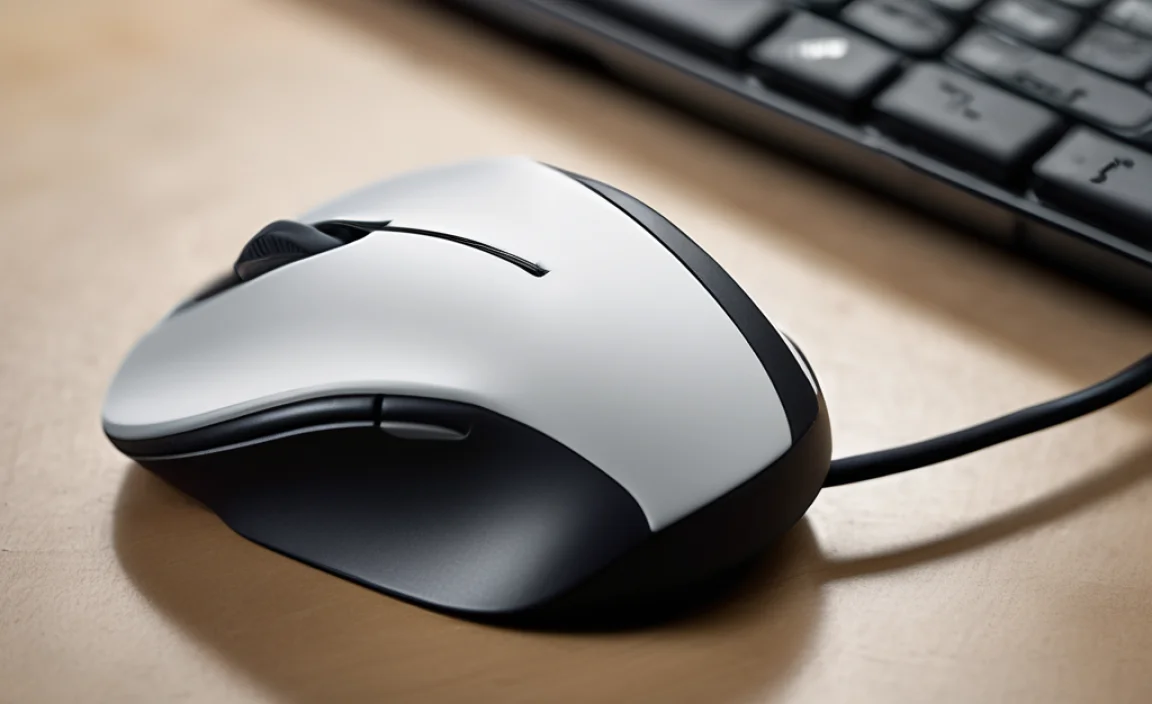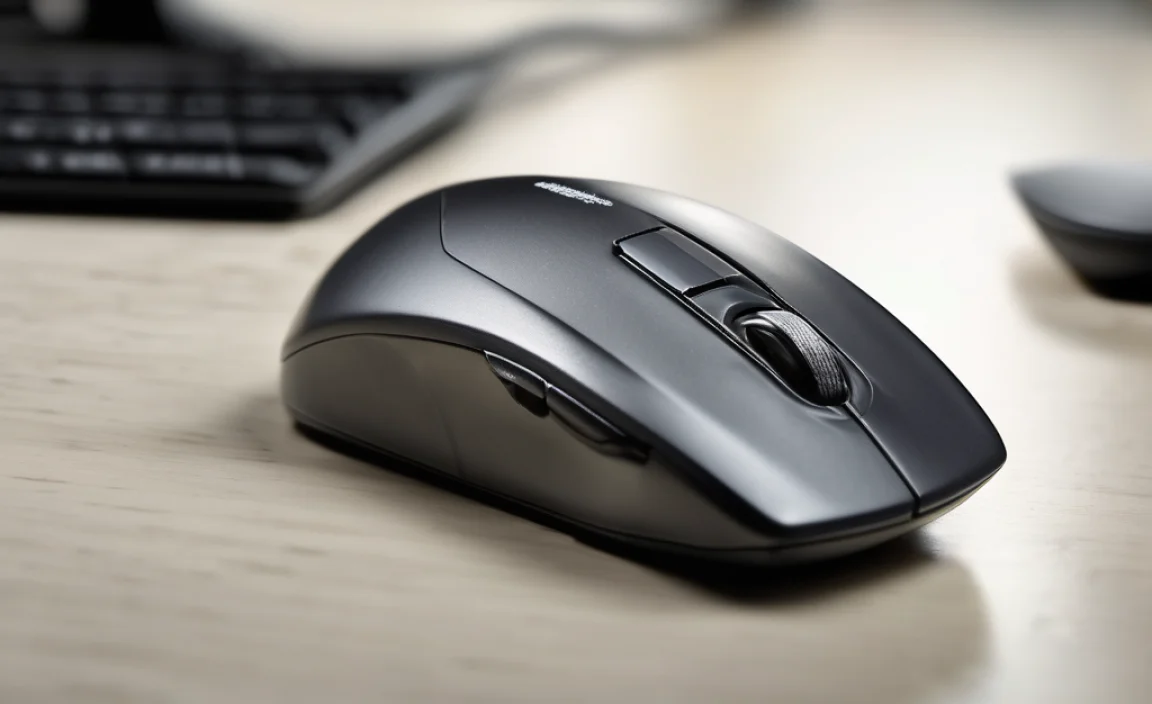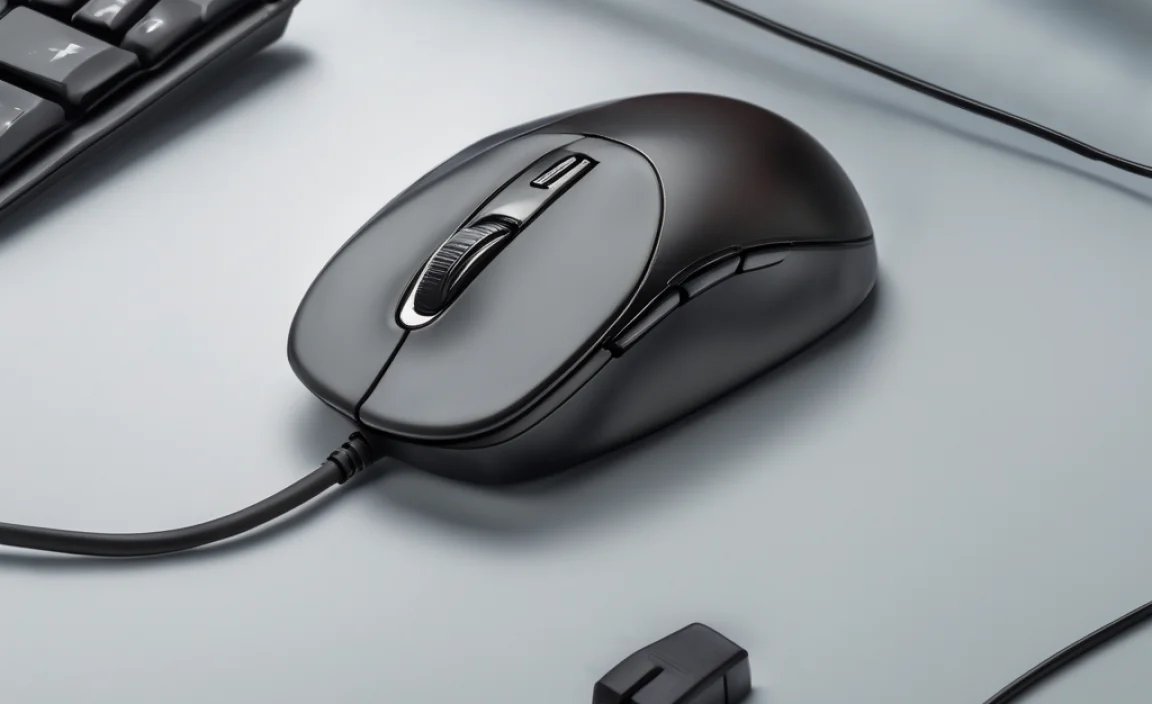Broadcom mouse driver fix for Windows 7 64 bit: Essential updates and troubleshooting steps to get your mouse working smoothly again. This guide provides simple solutions for common driver issues.
Is your trusty mouse acting up on your Windows 7 PC? You might be facing a common issue with Broadcom mouse drivers. Don’t worry, it happens to the best of us! This can be a real headache, making it tough to navigate your computer. But there’s good news. Fixing this is often simpler than you think. We’ll walk you through easy steps to get your mouse pointer back on track. Let’s dive in and sort out this sticky situation together!
Why Your Broadcom Mouse Driver Might Need a Fix on Windows 7

Think of drivers as tiny translators. They help your Windows 7 operating system talk to your computer’s hardware, like your mouse. When these translators get a bit confused or outdated, your mouse might stop working correctly. This can show up as a freezing cursor, erratic movements, or your mouse just not responding at all. For Windows 7 users, especially those with Broadcom-based pointing devices, this is a recurring challenge.
Common Symptoms of a Faulty Broadcom Mouse Driver:
- Mouse cursor freezes intermittently.
- Mouse pointer jumps or moves erratically.
- Mouse buttons don’t register clicks.
- The mouse is completely unresponsive.
- Windows Update shows an error related to the mouse driver.
These issues usually stem from a few key culprits: the driver might be outdated, corrupted, or simply not compatible with your specific Windows 7 version (like 64-bit). Sometimes, a Windows update can inadvertently cause conflicts. The good news is that most of these problems can be resolved with a few straightforward troubleshooting steps. Let’s get your mouse back in command!
Step-by-Step Guide to Fixing Your Broadcom Mouse Driver

Here’s your roadmap to getting your Broadcom mouse working perfectly on Windows 7. We’ll start with the easiest fixes and move to more detailed solutions.
Step 1: Basic Checks – The Quick Wins
Before we dive into software, let’s rule out the simple stuff. These quick checks can often save you a lot of time and hassle.
- Check Physical Connections: Ensure your mouse’s USB cable is securely plugged into the correct port. If it’s a wireless mouse, check that the USB receiver is properly seated and the batteries are fresh.
- Try a Different USB Port: Sometimes, a specific USB port can malfunction. Try plugging your mouse into another available port to see if that makes a difference.
- Test on Another Computer: If possible, connect your mouse to a different computer. If it works there, the problem is definitely with your Windows 7 machine’s drivers or software. If it doesn’t work on another PC either, your mouse might be faulty.
Step 2: Restart Your Computer – The Universal Fix
It sounds too simple, but a restart can resolve a surprising number of temporary glitches. When Windows starts up, it reloads all its drivers and services, which can clear up minor conflicts.
- Click the Start button.
- Click the arrow next to the Shut Down button.
- Select Restart.
Step 3: Check Device Manager – Your Driver Dashboard
Device Manager is where Windows lists all your hardware. It’s the best place to see if Windows recognizes your mouse and if there are any driver issues.
- Open Device Manager:
- Click the Start button.
- In the search bar, type Device Manager and press Enter.
- Alternatively, right-click on Computer (on your desktop or in the Start menu) and select Manage, then click Device Manager from the left-hand pane.
- Locate Your Mouse: Look for a category like “Mice and other pointing devices”. Expand it by clicking the small arrow next to it.
- Check for Errors: If you see your Broadcom mouse listed, check for any yellow exclamation marks (!). This icon indicates a problem with the driver. If you don’t see your mouse listed at all, or if it’s under “Unknown devices,” that’s also a sign of a driver issue.
Step 4: Update Your Broadcom Mouse Driver
If Device Manager shows an error or you suspect the driver is outdated, updating it is the next logical step.
Option A: Update Driver Automatically (Windows Update)
Windows Update can sometimes find and install the correct driver for your hardware.
- Open Device Manager as described in Step 3.
- Right-click on your Broadcom mouse (or the device with the error).
- Select Update Driver Software…
- Choose “Search automatically for updated driver software”.
- Follow any on-screen prompts. Windows will search online or on your computer for a suitable driver.
Option B: Update Driver Manually (From Manufacturer’s Website)
This is often the most reliable method. You’ll go directly to the source for the driver.
Since you’re specifically looking for a “broadcom mouse driver fix for windows 7 64 bit,” you’ll want to visit the Broadcom support site or your computer manufacturer’s website.
- Identify Your Hardware: If you know the exact model of your Broadcom mouse, search for its support page. If it’s an integrated mouse (like on a laptop), you’ll need to find the support page for your laptop’s make and model.
- Find the Drivers Section: Navigate to the “Support” or “Downloads” section of the manufacturer’s website.
- Select Your Operating System: Crucially, choose Windows 7 (64-bit) from the dropdown menu. Finding the correct OS version is key.
- Download the Driver: Look for a driver specifically for your mouse or touchpad. Download the latest available version. It might come as an executable (.exe) file or a compressed folder (.zip).
- Install the Driver:
- If it’s an .exe file, double-click it and follow the installation wizard.
- If it’s a .zip file, extract its contents to a folder, then go back to Device Manager, right-click your mouse, select Update Driver Software…, choose “Browse my computer for driver software”, and point Windows to the folder where you extracted the files.
External Link for Driver Information: For general guidance on finding drivers, you can refer to Microsoft’s support articles, though direct links to Broadcom drivers are manufacturer-specific. For example, Microsoft’s guidance on updating drivers is usually a good starting point: Microsoft Driver Update Guide.
Step 5: Uninstall and Reinstall the Driver
If updating the driver doesn’t work, sometimes removing the old driver completely and letting Windows reinstall it from scratch is effective.
- Open Device Manager.
- Expand “Mice and other pointing devices”.
- Right-click on your Broadcom mouse.
- Select Uninstall device.
- If prompted, check the box that says “Delete the driver software for this device”.
- Click Uninstall.
- Once uninstalled, click the Action menu at the top of Device Manager and select Scan for hardware changes. Windows should detect your mouse and attempt to reinstall a generic driver.
- If that doesn’t work, restart your computer and repeat Step 2. Windows will often try to reinstall the driver automatically after a restart.
Step 6: Check for Windows Updates
Microsoft often releases patches and updates that can resolve hardware compatibility issues. Ensuring your Windows 7 is up-to-date is important.
- Click the Start button.
- Click All Programs, then Windows Update.
- Click “Check for updates” on the left side.
- If updates are found, select the important ones (especially those related to system devices or drivers) and click Install updates.
- You’ll likely need to restart your computer after the updates are installed.
Step 7: Using System Restore
If your mouse was working fine recently and suddenly stopped, a System Restore can revert your system files and drivers to a previous state when everything was functioning correctly. This is a powerful tool for undoing recent changes that may have caused the issue.
- Click the Start button.
- In the search bar, type Create a restore point and press Enter.
- In the System Properties window that appears, click the System Restore… button.
- Click Next.
- You’ll see a list of restore points. Choose a point that was created before your mouse started having problems. If you don’t see enough options, check the box that says “Show more restore points”.
- Click Next, then Finish.
- Your computer will restart and attempt to restore your system. This process can take some time.
Important Note: System Restore does not affect your personal files, but it will remove programs, drivers, and updates installed after the restore point was created.
Understanding Driver Types for Broadcom Devices

Broadcom produces a wide range of components, and drivers can vary. When dealing with a Broadcom mouse, you might encounter drivers related to:
| Driver Type | Description | Relevance to Mouse Issues |
|---|---|---|
| Chipset Drivers | These are foundational drivers that manage the motherboard and fundamental hardware communication. | While not directly for the mouse, outdated chipset drivers can sometimes cause broader system instability that affects peripheral devices. |
| USB Drivers | These manage the Universal Serial Bus ports on your computer. | Crucial for any USB-connected mouse. Ensure your USB drivers are up-to-date, especially if you’re using newer USB devices with an older OS. |
| HID (Human Interface Device) Drivers | This is a class of drivers that Windows uses for input devices like keyboards, mice, and game controllers. | Generic HID drivers are built into Windows. Specialized drivers might be needed for advanced features of a particular mouse. |
| Specific Mouse/Touchpad Drivers | These are provided by the mouse or laptop manufacturer and are optimized for that specific hardware. | This is usually what you need to find and install for Broadcom mice or built-in touchpads to ensure full functionality and fix specific bugs. |
When searching for drivers, always try to find the one designated for your specific hardware model and operating system. Searching for “Broadcom mouse driver fix for Windows 7 64 bit” will help narrow down your options considerably.
When to Consider Professional Help

While most driver issues can be resolved with the steps above, there are times when you might consider seeking expert help:
- You’ve tried all the steps, and the mouse still isn’t working.
- You’re uncomfortable with downloading and installing drivers from external websites.
- You suspect a hardware failure rather than a driver problem.
In these cases, contacting your computer manufacturer’s support or a local IT professional can provide the assistance you need.
Frequently Asked Questions (FAQ)
Q1: My mouse suddenly stopped working after a Windows update. What should I do?
This often happens when an update conflicts with your existing driver. Try uninstalling the mouse driver through Device Manager (Step 5) and then restart your PC. Windows will try to reinstall a basic driver. If that doesn’t work, you’ll likely need to manually find and install the correct driver from your mouse or computer manufacturer’s website (Step 4, Option B).
Q2: I can’t find drivers for my old Broadcom mouse on the manufacturer’s website. What are my options?
For older hardware, manufacturers may stop supporting newer driver versions. In this case, Windows’ built-in generic drivers might be your best bet. Go to Device Manager, right-click your mouse, select “Update Driver Software,” and choose “Search automatically.” If that doesn’t work, you might need to try a trustworthy third-party driver utility, but proceed with caution and ensure it’s from a reputable source.
Q3: What does “Windows detected a driver installation problem” mean?
This message means Windows encountered an error while trying to install or update a driver. It could be due to a corrupted driver file, an incompatible driver, or a conflict with another piece of software or hardware. Try restarting your PC and attempting the driver installation again, or try uninstalling the problematic driver first.
Q4: My Windows 7 computer is 64-bit. How do I make sure I download the correct driver?
When you download drivers from the manufacturer’s website, you’ll usually see options for different operating systems and architectures. Look specifically for “Windows 7 64-bit” (sometimes listed as Win7 x64, or similar) for your Broadcom mouse or computer model. Downloading the wrong version can cause further issues.
Q5: Is it safe to use driver updater software?
Driver updater utilities can be convenient, but they carry risks. Some can install incorrect or outdated drivers, potentially causing more problems. Always prioritize getting drivers directly from your computer or hardware manufacturer’s official website. If you do use a utility, choose a well-reviewed and reputable one, and create a system restore point before you start.
Q6: Can a virus cause my mouse driver to fail?
While less common, malware can interfere with drivers and system processes. If you suspect a virus, run a full scan with a reliable antivirus and anti-malware program. If any threats are found, follow the software’s recommendations to remove them. After cleaning your system, you may need to reapply the driver fixes mentioned in this guide.
Conclusion
Dealing with a malfunctioning mouse driver on Windows 7 can be a road bump, but as you’ve seen, it’s usually a fixable one. By methodically working through these steps – from simple reboots and connection checks to more involved driver updates and uninstalls – you can bring your Broadcom mouse back to full working order. Remember, patience and following the steps carefully are key. You’ve got this! Getting your computer hardware to cooperate smoothly is a rewarding part of managing your own tech, and now you’re better equipped to handle it. So, give these solutions a try, and get back to clicking and cruising with confidence.
